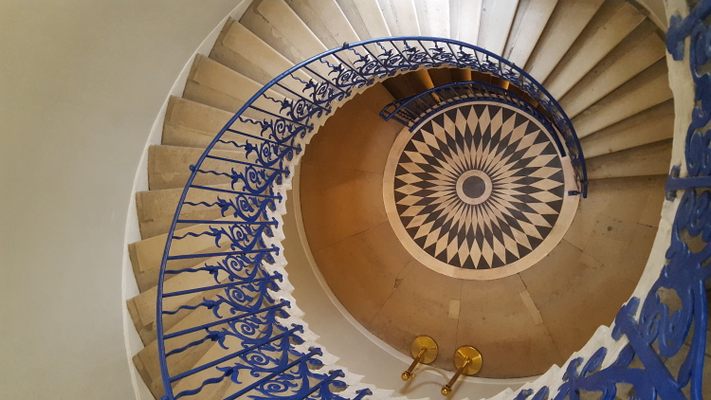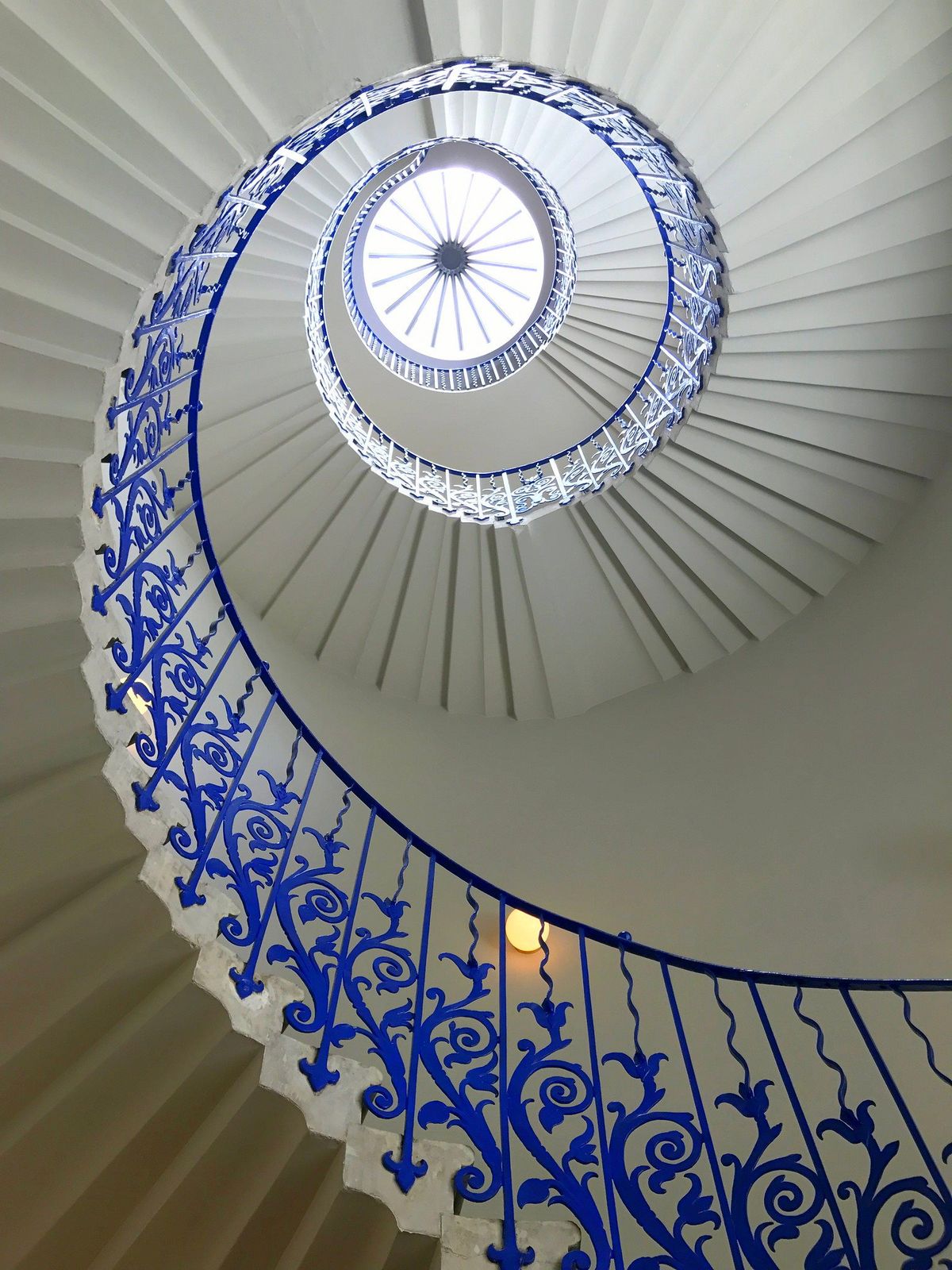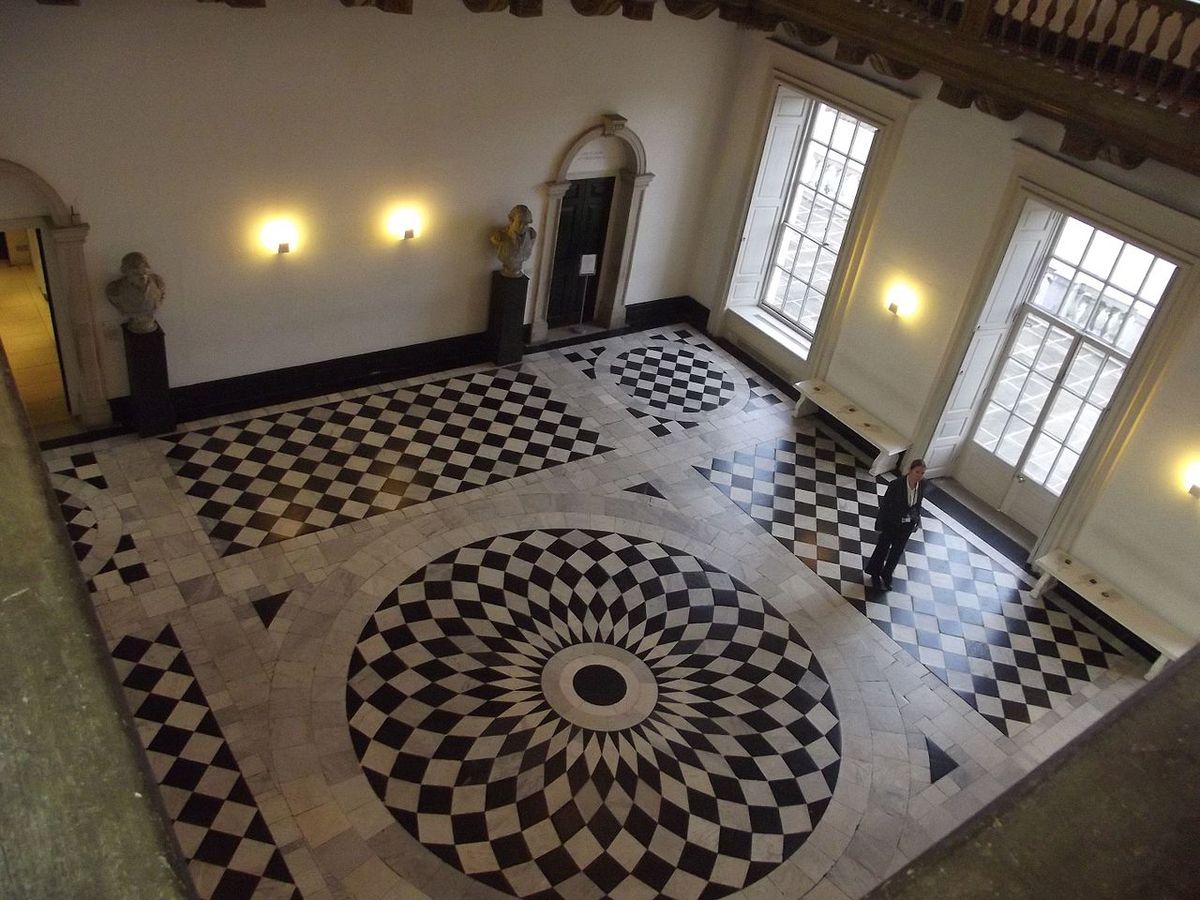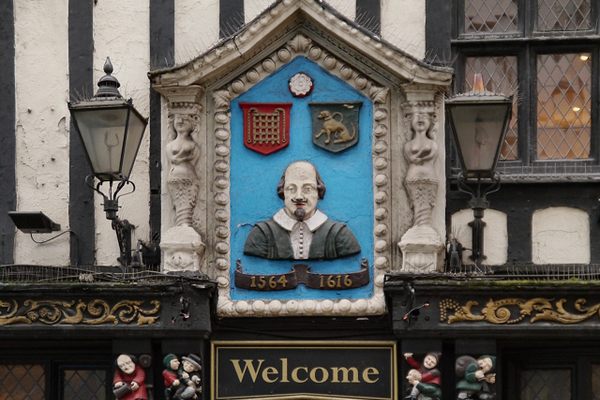About
In 1635, the acclaimed English architect Inigo Jones completed work on Queen's House in Greenwich. It was the first building in England designed in the pure classical style, with Jones boldly bringing the classical architecture of Rome and the Italian Renaissance to England. Inside the building was another first: the Tulip Stairs, an elegant staircase unlike anything previously built in Britain.
Technically speaking, the Tulip Stairs were the first self-supporting spiral stairs in Britain. The absence of a central support structure allows for an unobstructed view up through the center of the staircase. The design of the Tulip Stairs was inspired by a Venetian model. Cantilevers in the walls support the stairs, with each tread resting on the one below.
The sweeping elegance of the wrought iron bannister is enhanced by the particular shade of blue paint which was made using crushed glass. The blue hue creates a striking contrast with the pristine white of the steps and walls, and stylized flowers in the balustrade give the staircase its name.
The metal florets were initially misidentified by one of the blacksmiths working on the railings. They were meant to symbolize Lillies, the flower closely associated with France and the heritage of the Queen Henrietta Maria. On several invoices for the staircase, they were referred to as the 'Tulip Stairs', and thus the nickname has remained.
Interestingly, there are no resting benches along the entire length of the staircase. It was quite common to build an alcove, or landing, that would allow for a moment of repose as one climbed up the steps. It is thought that Jones intended visitors to descend the stairs from the Great Gallery, thus there was no need to allow for an additional recess.
In 1966, the Tulip Stairs earned an altogether different kind of fame. The retired Canadian reverend R. W. Hardy and his wife were visiting Queen’s House and took some photos of the Tulip Stairs. Upon developing the photos on their return home, they discovered that one photo had captured a particularly chilling image. Now considered a classic paranormal artifact, the photo seems to show a shrouded spectral figure climbing the stairs, possibly in pursuit of a second figure.
The reverend and his wife asserted that no one was ascending the stairs when the photo was taken. An investigation followed to determine the nature of the image, including expert examination of the negative to rule out tampering, but nothing was found to explain the strange photo. The mystery remains.
Related Tags
Know Before You Go
The Tulip Stairs are located on the ground floor of Queen’s House, near the impressive Great Hall. Queen’s House is located on Romney Road, Greenwich. It’s about 8 minutes from central London by rail, 20 minutes by DLR, or you can get there by boat using the Thames Clipper service. It’s open from 10 a.m. to 5 p.m. daily; entrance is free.
Community Contributors
Added By
Published
January 27, 2020
Sources
- https://www.rmg.co.uk/see-do/we-recommend/attractions/tulip-stairs
- https://www.rmg.co.uk/see-do/we-recommend/attractions/queens-house-ghost
- https://fullsuitcase.com/tulip-stairs-queens-house-greenwich/
- https://www.solosophie.com/tulip-stairs-prettiest-spiral-staircase-london/
- http://carolineld.blogspot.com/2017/06/tulip-stairs.html
- https://londonist.com/2016/02/things-you-didn-t-know-about-queen-s-house-in-greenwich
- https://blackcablondon.net/2014/10/28/londons-best-ghost-photographs/












































































